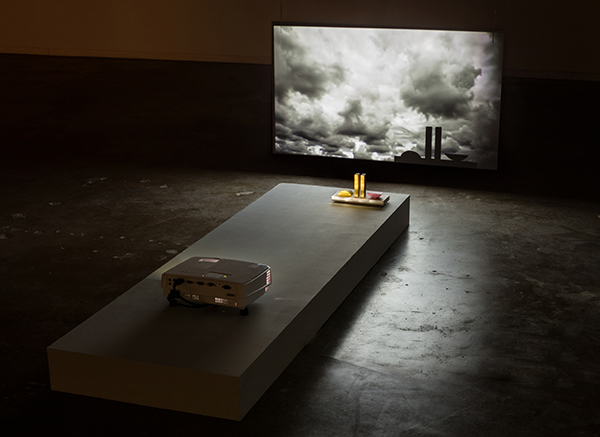Abstraction Lies
Video installation 2015
Various dimensions


View of installation during the exhibition Past projects for the Future, Dallas Contemporary, Dallas, USA, 2016
The installation Abstraction Lies takes as its starting point the architectural design of the iconic National Congress Palace in Brasilia, the federal capital of Brazil. The building’s silhouette is reproduced by the shadows created by children’s toy blocks, which are placed in front of a video projection of a turbulent sky.
Alma Siedhoff-Buscher designed the toy blocks at the Bauhaus school in 1923. The blocks speak to the role of play as an educational device in early childhood, foregrounding education as a fundamental program within the Bauhaus, which was the most influential school of the 20th century for thinking avant-garde projects involving art and architecture.
Almost 40 years later, architect Oscar Niemeyer designed the National Congress Palace, which was inaugurated in 1960. The building includes two towers and a main horizontal building that serves as a platform for the domes that house the Senate and House of Representatives.
The building and its image remain the Brazilian capital’s main symbol. When Brasilia was planned, the city represented a new tradition in which rationality would become a central objective for facilitating development, thereby overcoming the country’s delayed modernization and paving the way for the image of a modern nation.
The contradiction between these two images (the children’s toys and the National Congress) engaged in this shadow play evinces the impasse of modern Utopias—be it the history of the Bauhaus or the construction of Brasilia. Fifty years after the foundation of Brasilia, what can the National Congress building tell us about the ideas that shaped the city and their relevance for the dystopian times we live in today?